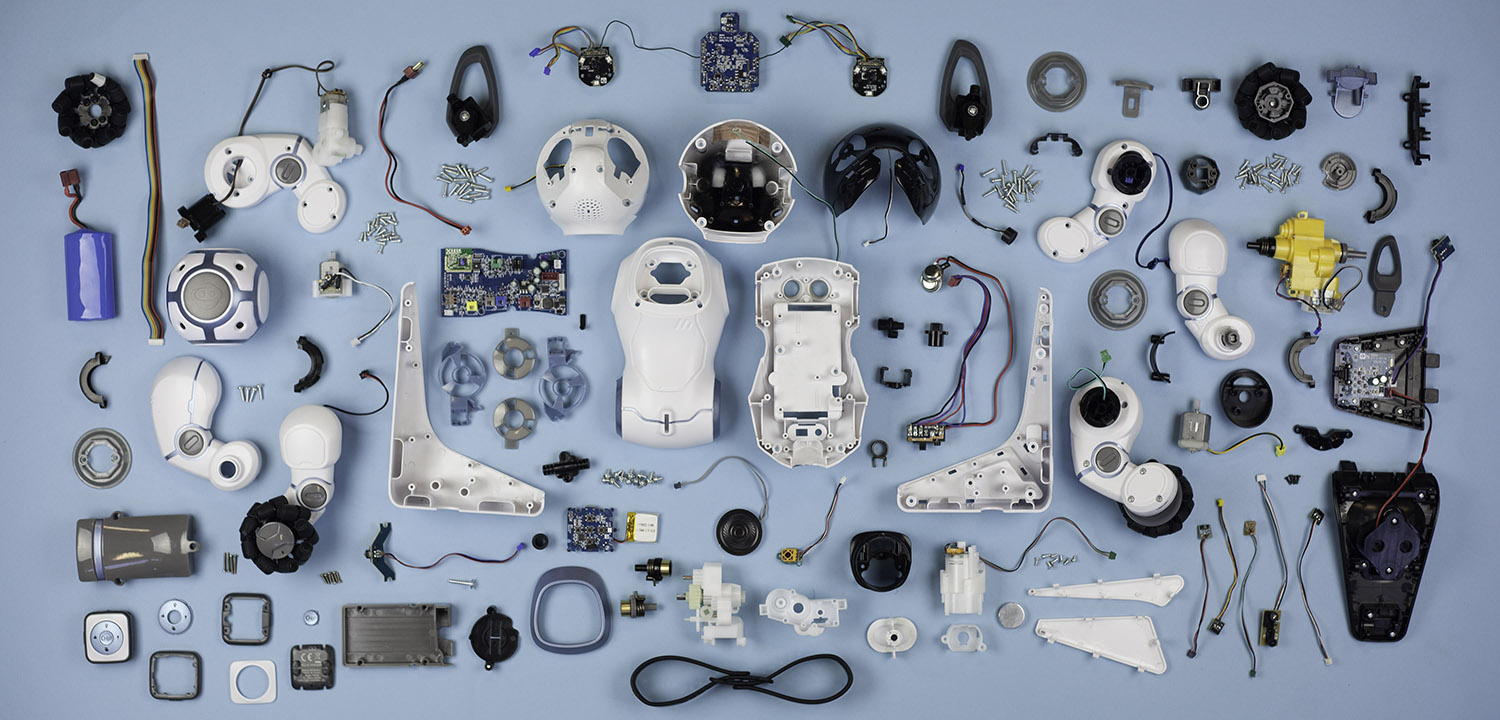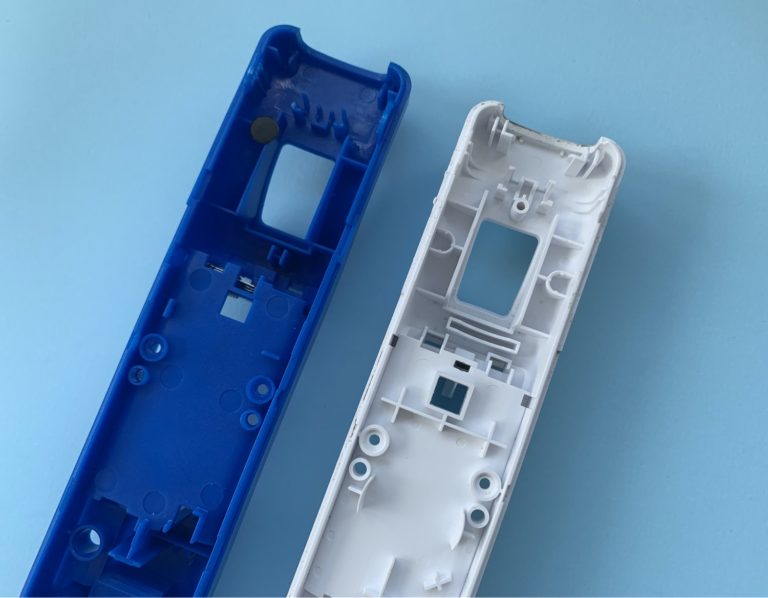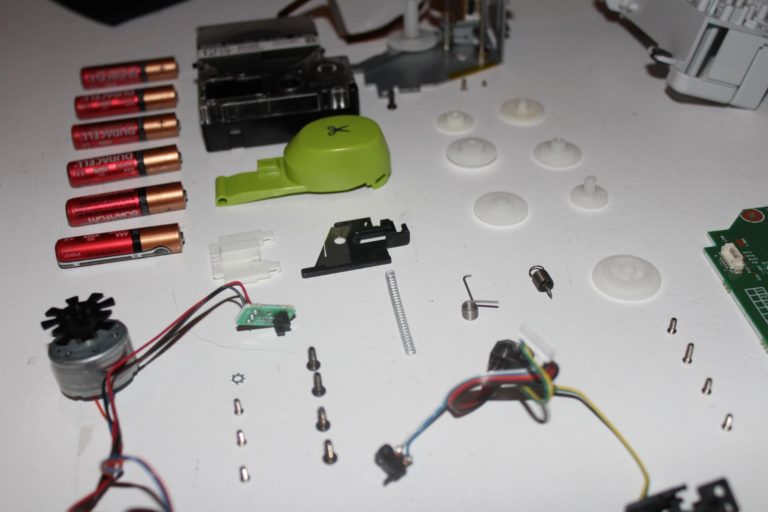This week’s teardown is a collaboration between Fictiv manufacturing engineer Sylvia Wu and guest industrial designer Blake Johnson.
CHiP is the latest release from famed robotic toymaker WowWee and comes jam-packed with personality and playful features. Through gesture and voice commands, as well as a wearable remote control, CHiP perform tricks like greet, fetch, sit, and dance. Someone at WowWee even had the wacky idea to have CHiP use its articulating legs to do yoga…because what else would you want your robot dog to do, really? CHiP also responds to taps and pets on his head and makes little robot dog sounds.
In fact, we had so much fun playing with CHiP before this teardown that it ended up being quite the controversy when it came time to see what makes this little guy tick…but we do what we must! So how does a company pack personality, robot tech, and several additional accessories into a $200 bundle? Let’s find out…
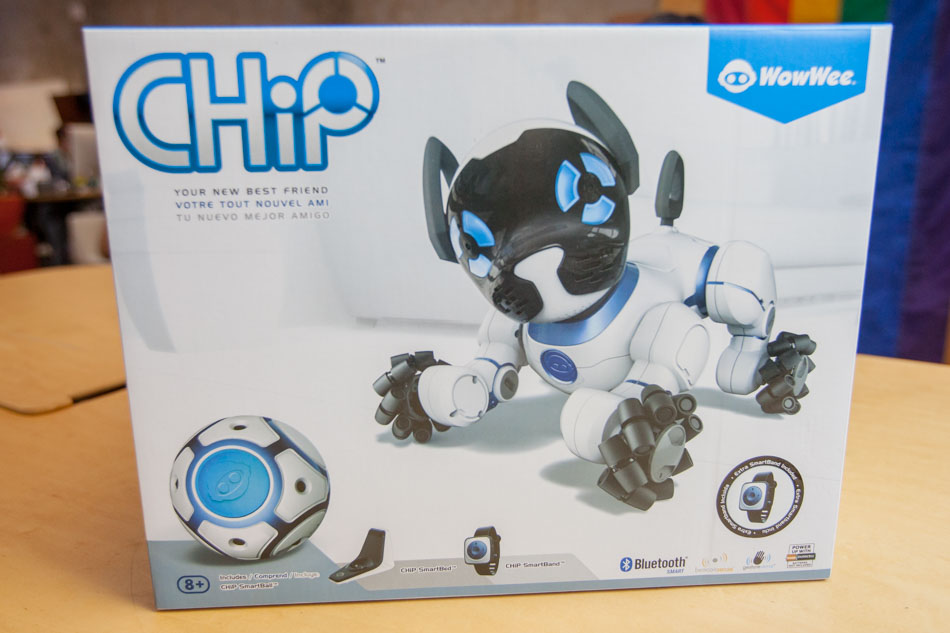
Design and Experience
Before opening him up, let’s take a look at CHiP from a design point of view. He may be small, but he has a strong, muscular silhouette. His closest real dog cousin is probably a Boston Terrier.
CHiP’s primarily black, white, grey, and metallic blue color palette gives him a contemporary look befitting a modern robotic toy. The metallic blue accents are sometimes achieved in-mold and other times painted on. He feels pretty durable, as any good toy should be, but injection molding defects are visible in several places (such as flash and unclean gate trims), which make CHiP fall short of a premium product.
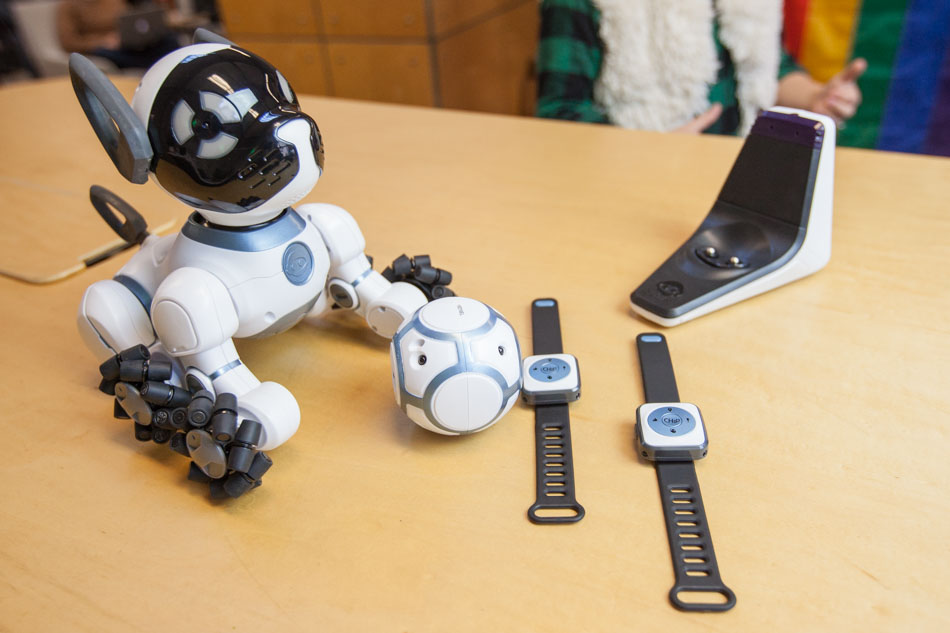
In order to get CHiP set up, he needs to sit on his charging dock for some time. The charging dock plugs into a wall outlet. His remote controls are charged via USB. His ball accessory requires batteries. All these different protocols do not translate into a smooth experience.
However, CHiP can be a lot of fun, which helped us forgive the setup friction. He actually moves around very quickly, giving the impression of an energetic little pup. His eyes light up in different colors, and he makes various sounds to indicate his emotions. He can navigate to his ball while playing fetch fairly easily, as long as his surroundings are obstacle-free. Bringing the ball back to the person wearing the Smartband is also pretty smooth, as long as the band is in CHiP’s line of sight the whole time.
As mentioned previously, CHiP responds to voice commands, but not without a little bit of sexism sprinkled in—CHiP was most responsive to deep male voices and often only responded to women when they deliberately lowered their voices. We don’t think this is intentional, but it’s definitely an engineering oversight.
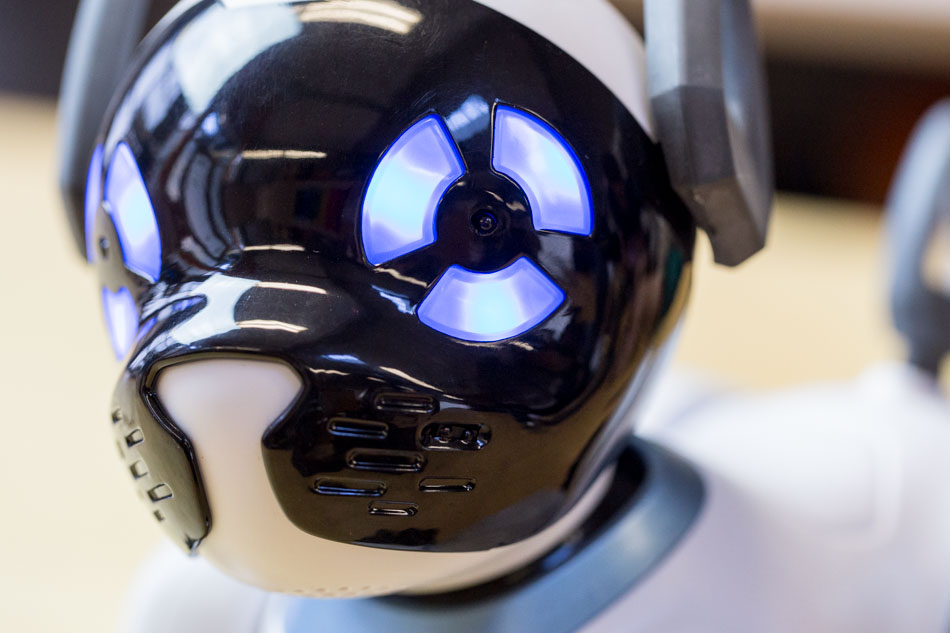
“Enough with this design talk; get on with the teardown!” OK, OK; we hear you.
Mechanical System
Naturally, the first thing we want to do is remove the battery. Safety first!
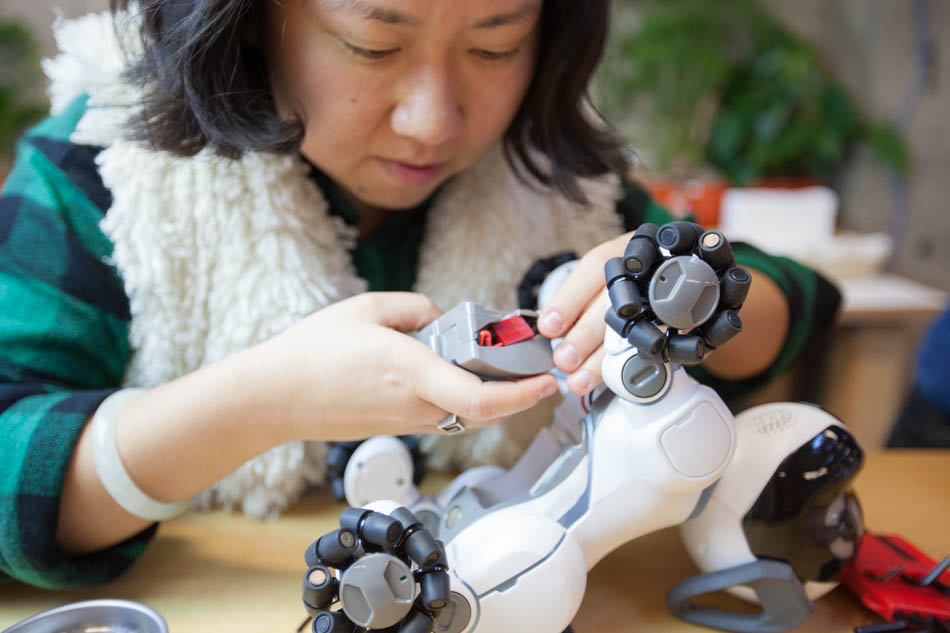
The first surprise: The lithium ion battery pack isn’t just behind a protective panel; it has a complete housing of its own with only a small hole for wires. Hex screws hold the housing halves together; whereas all other screws in CHiP were Phillips head. The battery housing has serious thick walls. All these precautions are to prevent battery punctures, which cause explosions. It’s good to see WowWee taking product safety so seriously.
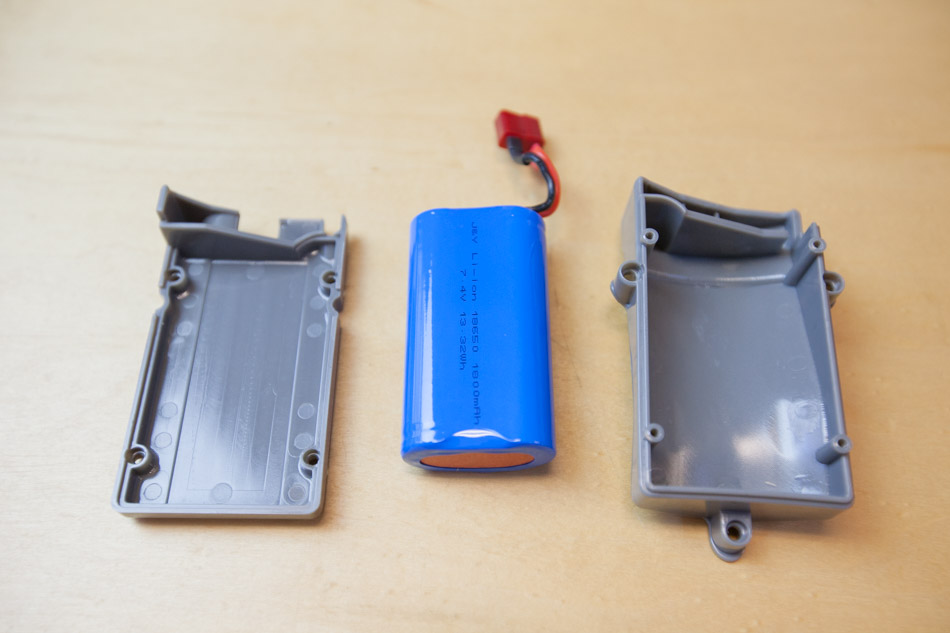
Next, we separate CHiP’s upper body from his lower body. Four basic Phillips head screws make this a quicker and simpler job than the battery compartment. I guess it’s OK if your kids pop their CHiP open, as long as they don’t get into the battery? Look away, CHiP; you don’t want to see this!
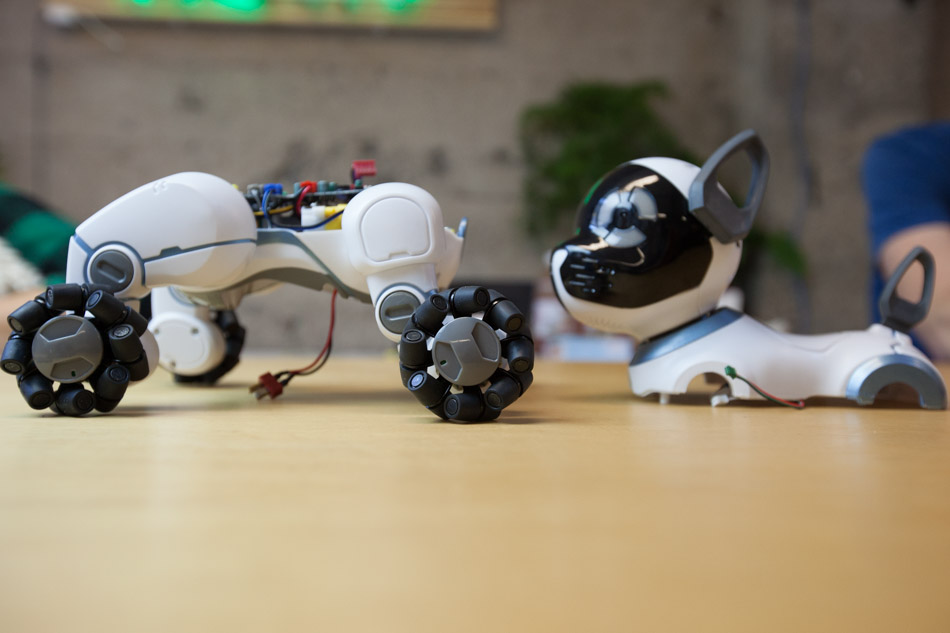
We realize at this point that WowWee engineers clearly did not need to do any miniaturization for this little dog. It’s quite airy in there, and there are no space-saving features. Everything is held together with normal-sized self-tapping fasteners.
Here is the first PCBA driving all of CHiP’s motors: All connectors are color-coded for easy assembly. The corresponding wire harness has the same color.
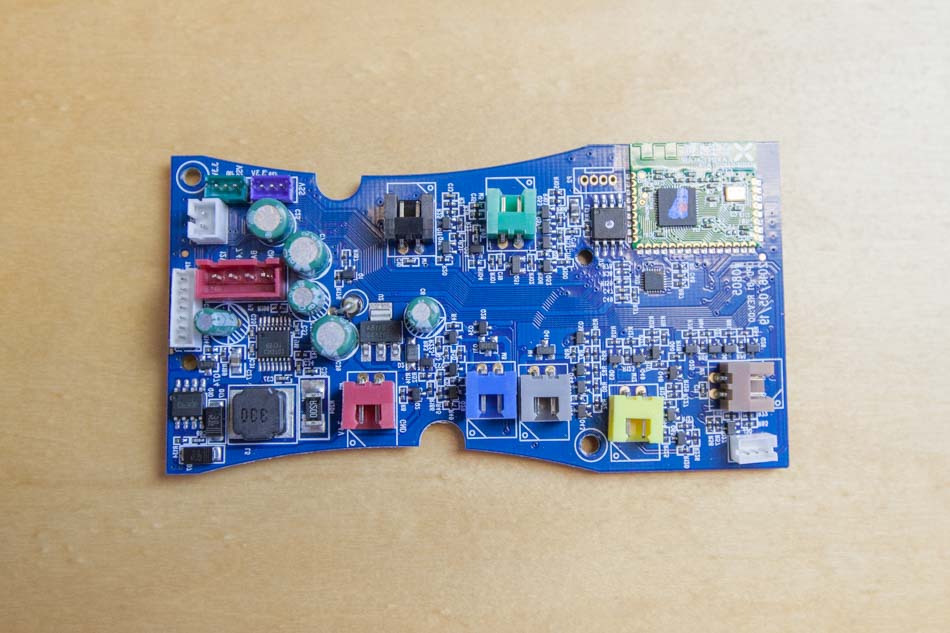
Underneath the main PCBA, there are two gear boxes, one for the front legs and one for the back. The gear boxes are identical, but they are color coded explicitly for assembly. A+ for DFA!
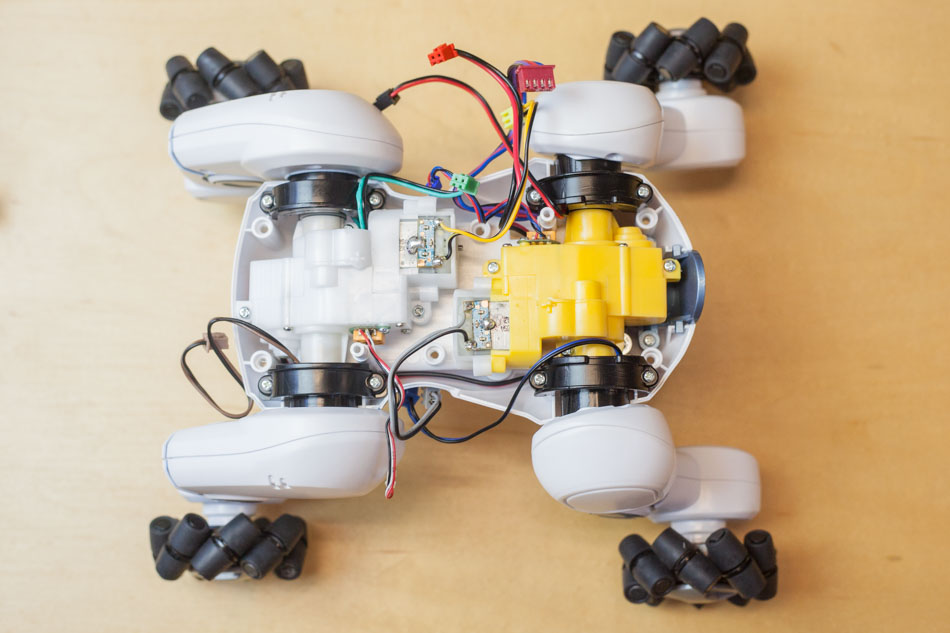
Once we remove several fasteners, the leg assemblies come right out. Without the constraint of the body enclosure, the legs pull straight off from the gearboxes.
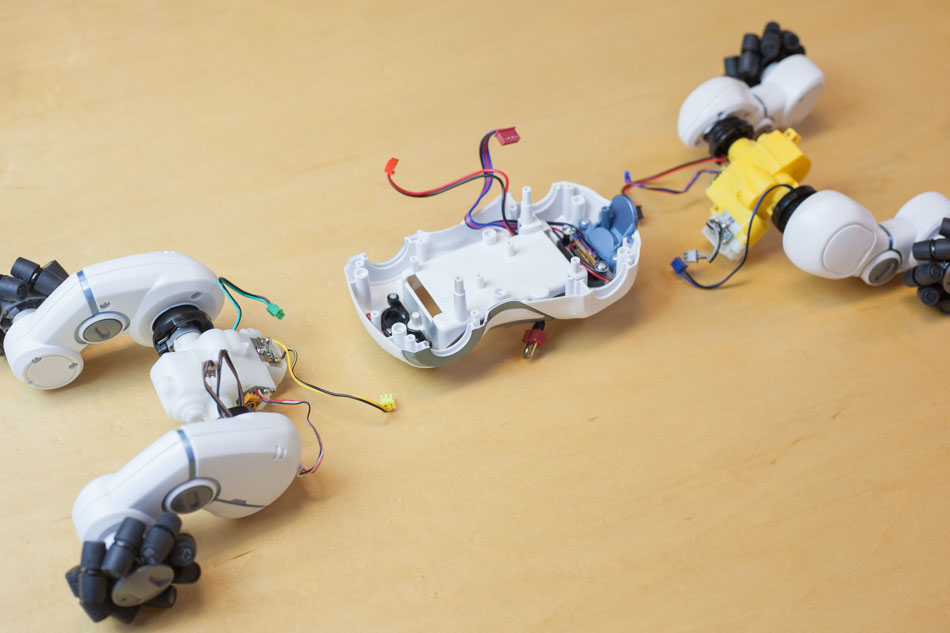
Joints between the gear boxes and legs incorporate brass sleeve bearings, which create a smoother rotating connection for the output. Torsion springs are used for shock absorption and help the leg joints feel less rigid and more like lifelike.
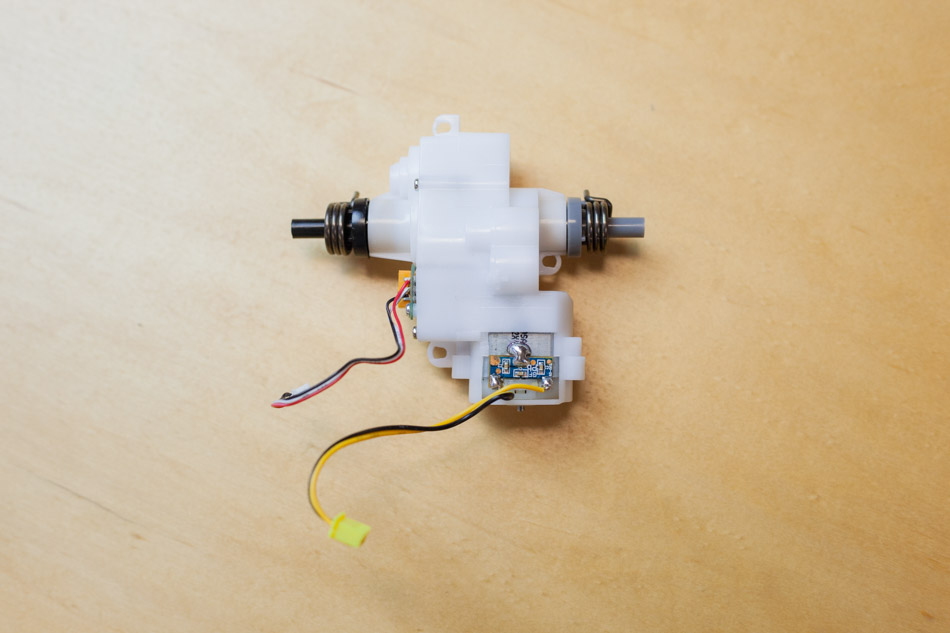
Let’s open up one of those gear boxes. There are some interesting features here: A worm screw is mounted to the DC motor shaft. The corresponding worm gear gets geared down several times before reaching symmetrical outputs: CHiP’s front left and right legs move synchronously, and the same thing goes for the hind leg pair. There’s also an ancillary output shaft connected to a mechanical potentiometer; this is to monitor the leg position, which is very important for closed-loop (feedback) control.
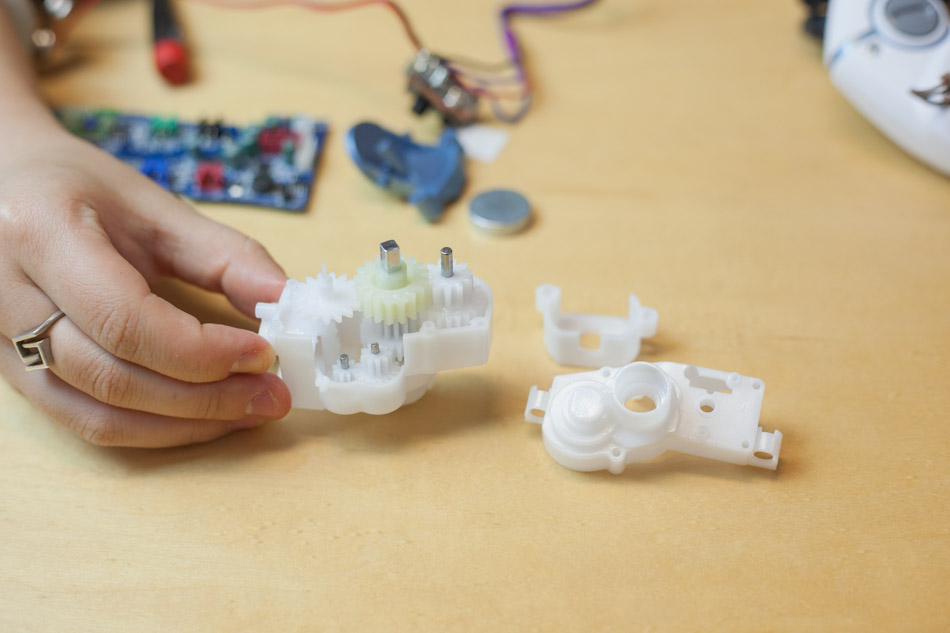
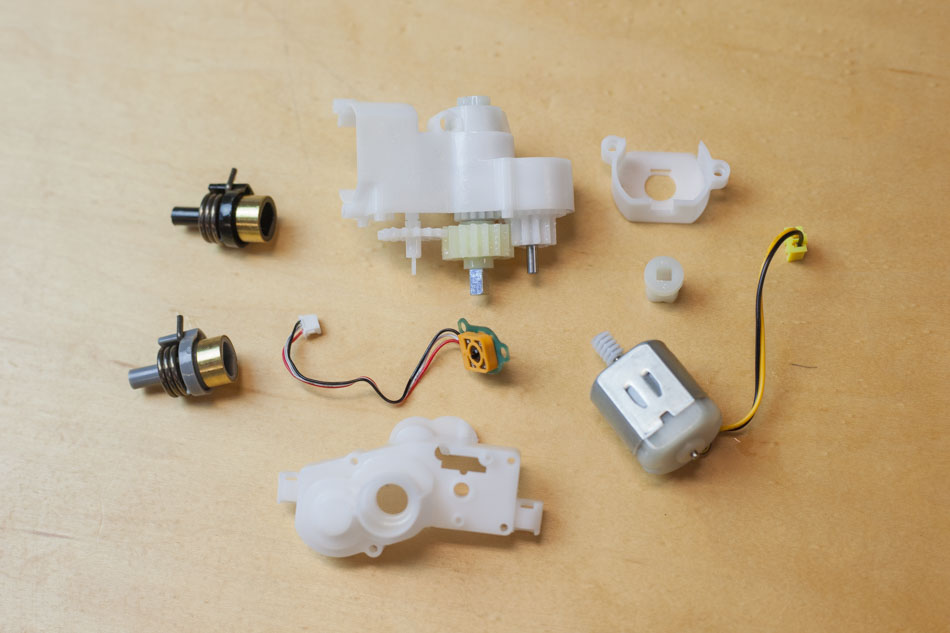
The leg halves come apart to reveal another DC motor-powered gearbox. This drives the “paws,” aka Mecanum wheels. Mecanum wheels are super neat: they allow CHiP to move in any direction (front-and-back and side-to-side) while in any orientation. This helps CHiP maneuver in tight spaces without room for turning.
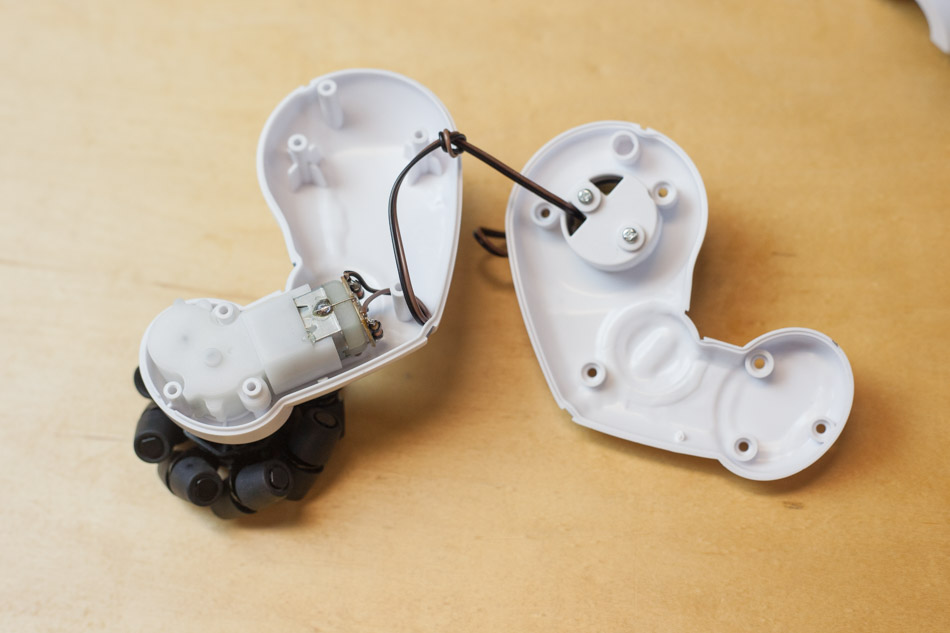
A quick note on how this works: When the wheels are all turning in one direction, CHiP moves forwards and backwards. When the front and back wheels rotate in different directions, CHiP moves from side to side.
This technology was used in a production forklift called the Airtrax ATX-3000, now no longer produced—but its legend lives on! It’s so futuristic that it made an appearance in the 2009 Star Trek movie.
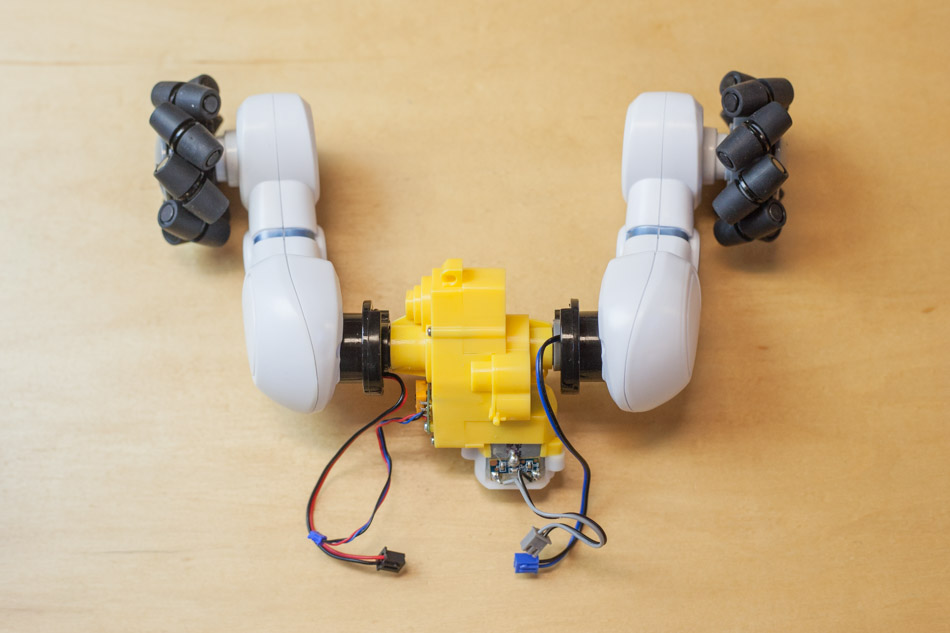
Due to mecanum wheels’ working principle, wheels are specific to the left and right sides. Again, WowWee engineers used color coding to clarify which wheels should go on which side.
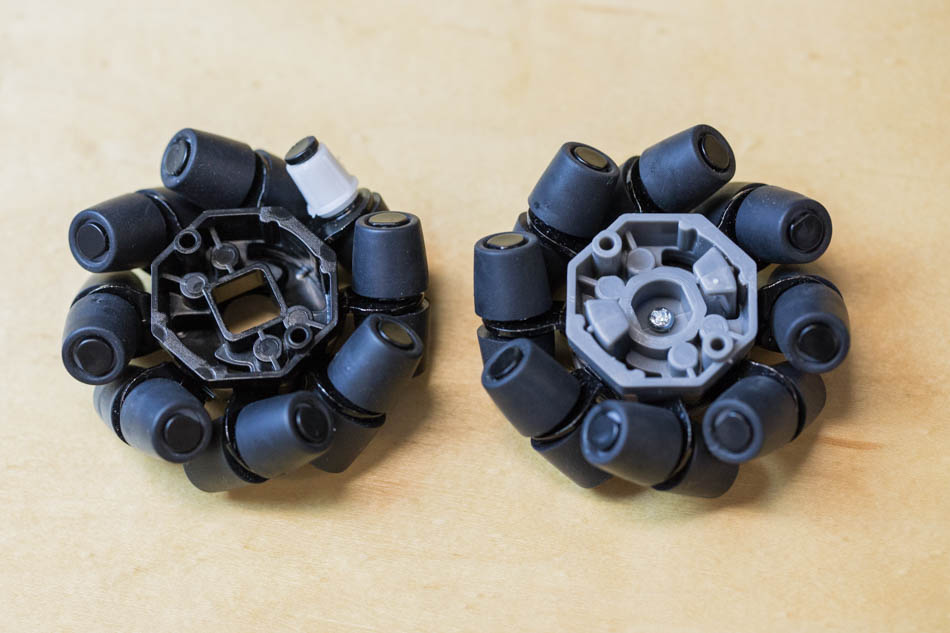
Each mecanum wheel is quite the assembly. The rollers are composed an elastomer sleeve over a delrin bearing, which mounts onto a steel pin axle. The axles are then mounted onto a sheet metal hub. This whole thing mounts to the “ankle” via a turn-and-lock mechanism, which makes the wheels easy to remove and replace without any tools. Our guess is that shoelaces, cables, and doll’s hairs might get tangled in the wheels, and this makes it easy to free CHiP in those instances.
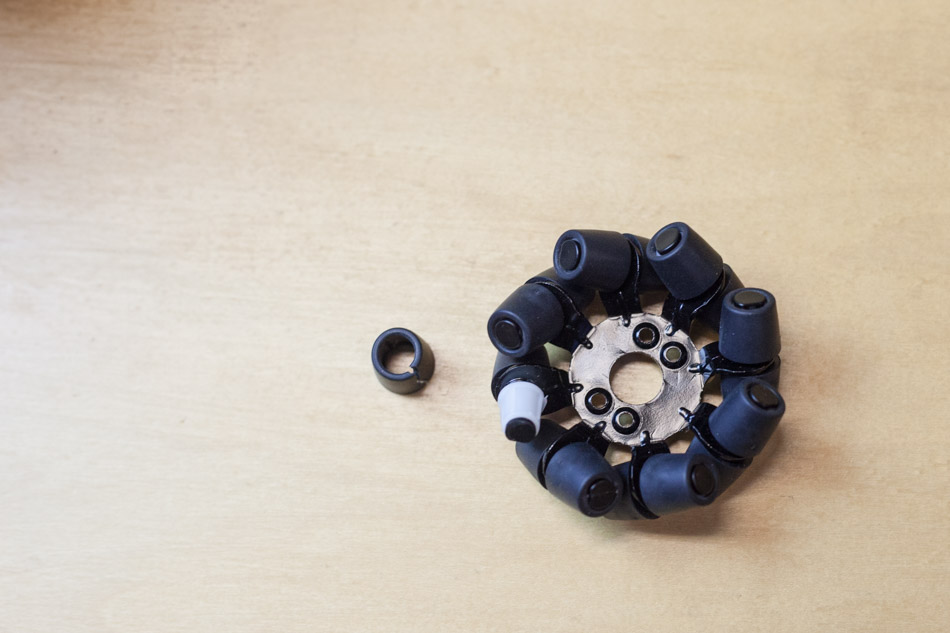
The main mechanical difference between the front and back is that there is an extra degree of freedom in the front shoulders. The front legs can roll a couple of degrees toward and away from the body. This movement is not driven by any actuators, so it’s likely another feature designed to give the little guy a little bit more organic realism.
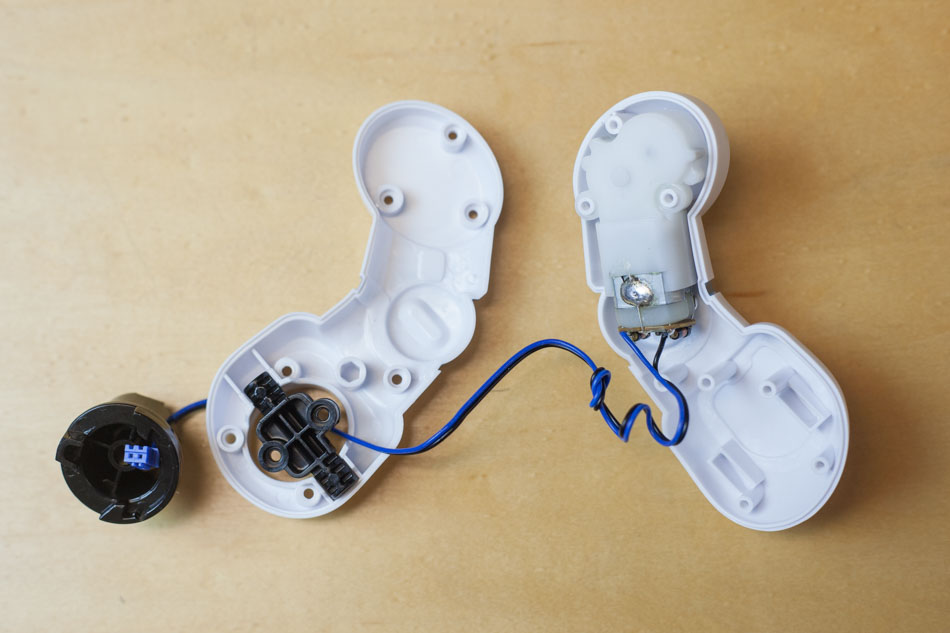
Below the motors, we find that CHiP’s two modes of recharging (metal contacts on his butt and a direct plug in his chest) run through a single PCBA, on which we also find the on/off switch.
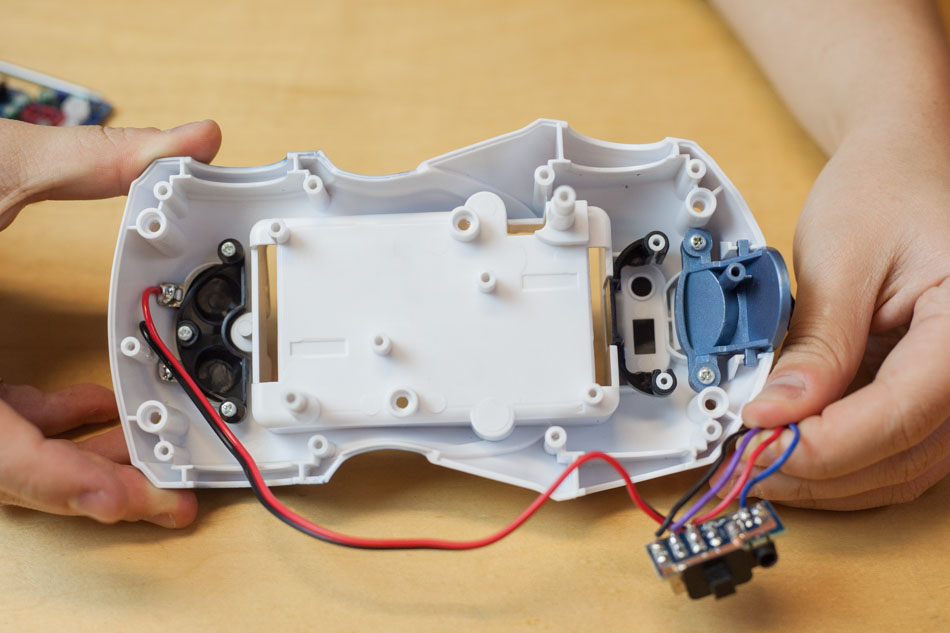
CHiP has a chest magnet that grabs his ball during fetch. It is cleverly held in place by the blue WowWee logo emblem.
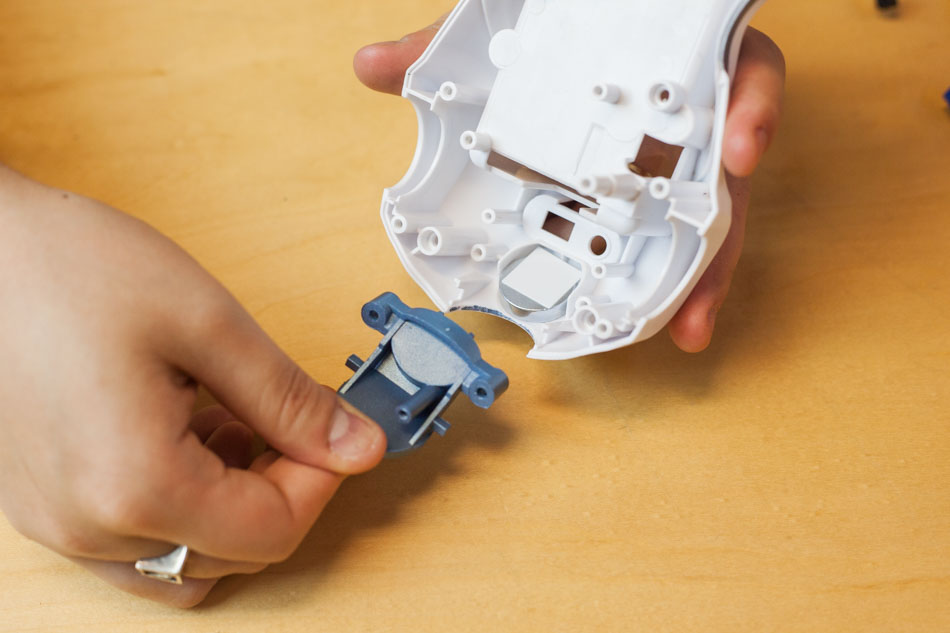
That’s about it for CHiP’s body, but there are some more discoveries to be made in his head.
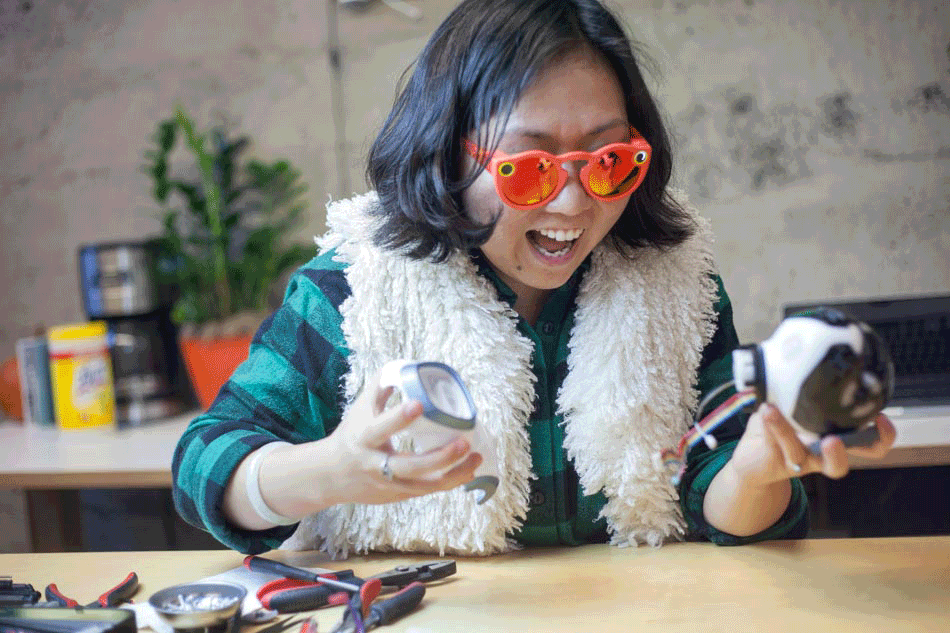
The blue collar around CHiP’s neck is one of only a couple of aesthetic features that are molded in blue plastic instead of painted (see the hip). This could have been a design-driven decision to make sure that focal point features looked cleaner. The painted features inevitably have a small amount of overspray.
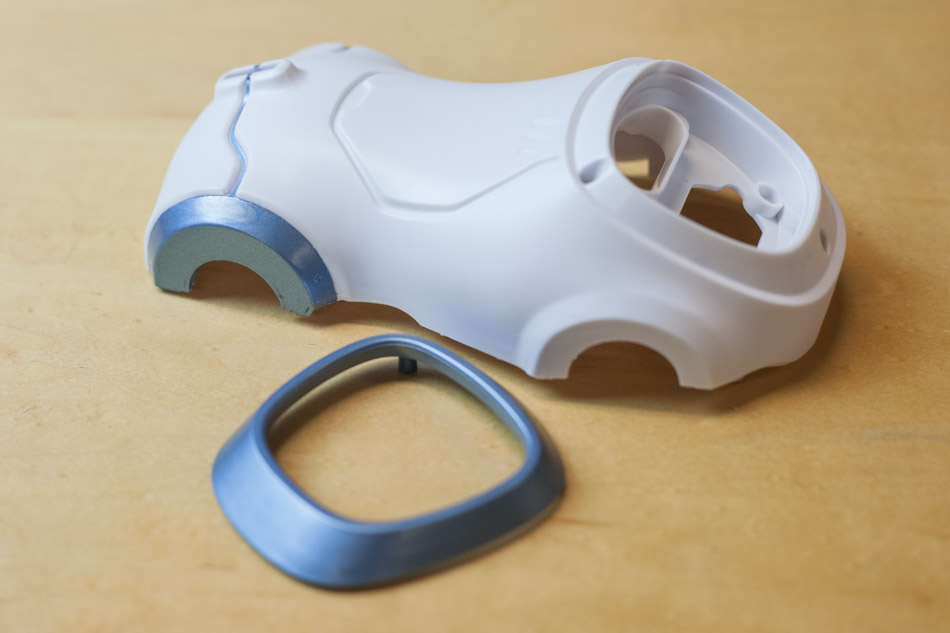
In CHiP’s head, we find a clever mechanism that provides the ears with some movement without any additional motors. An arm attached to the ear slides along a swooping channel in the neck, so when CHiP turns his head, his ears rotate a little at the same time. Nice!
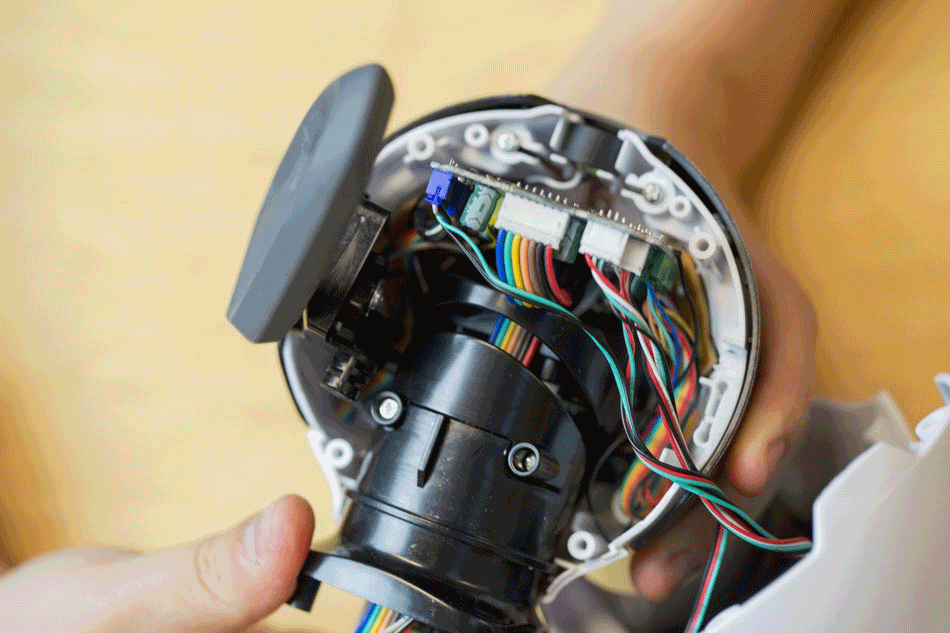
We wrap up the mechanical system with one final gearbox that sits in CHiP’s neck and has a potentiometer to track head position and provide feedback for the control loop.
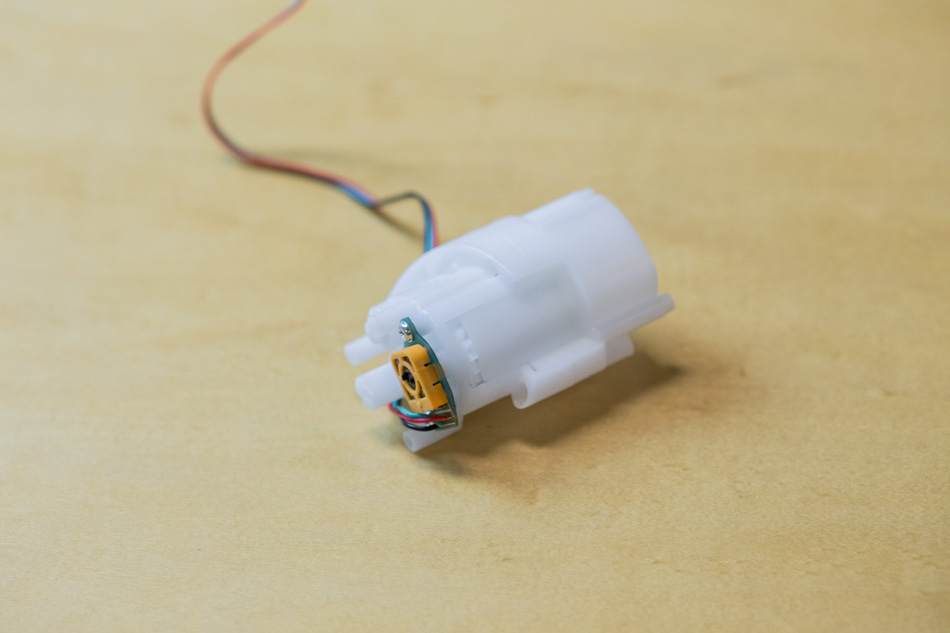
Sensors
The first sensing feature we come across, right at the top of CHiP’s head, was his mic. Wait a second…there’s no microphone hole! Could this have caused CHiP’s apparent favoritism for deep voices? Bass/low frequency waves travel through a medium further than high frequency waves because there is less energy dissipated to the medium.
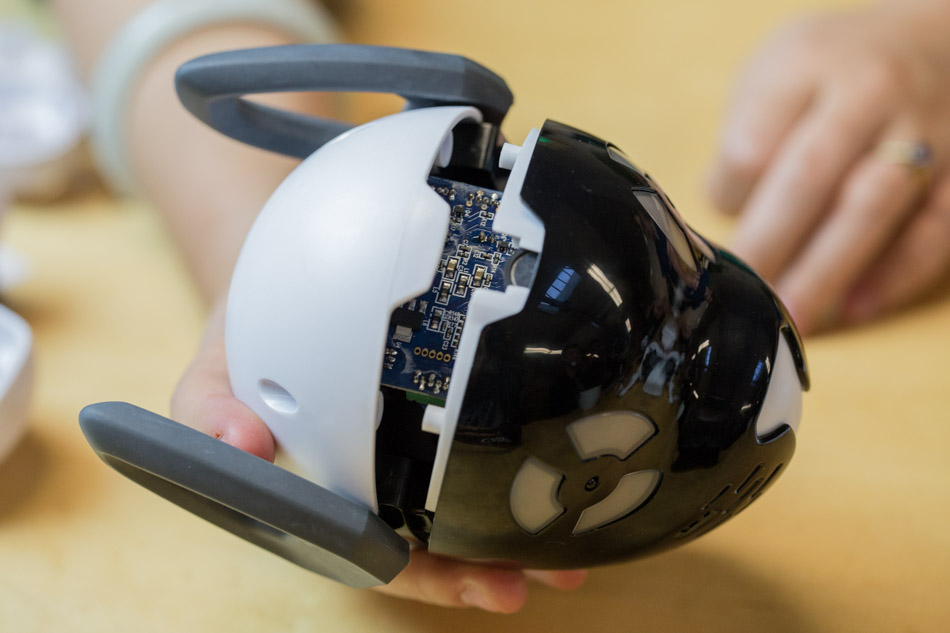
In the back of CHiP’s head, we find three IR transmitter and receiver pairs mounted on small PCBs. Here’s one of them.
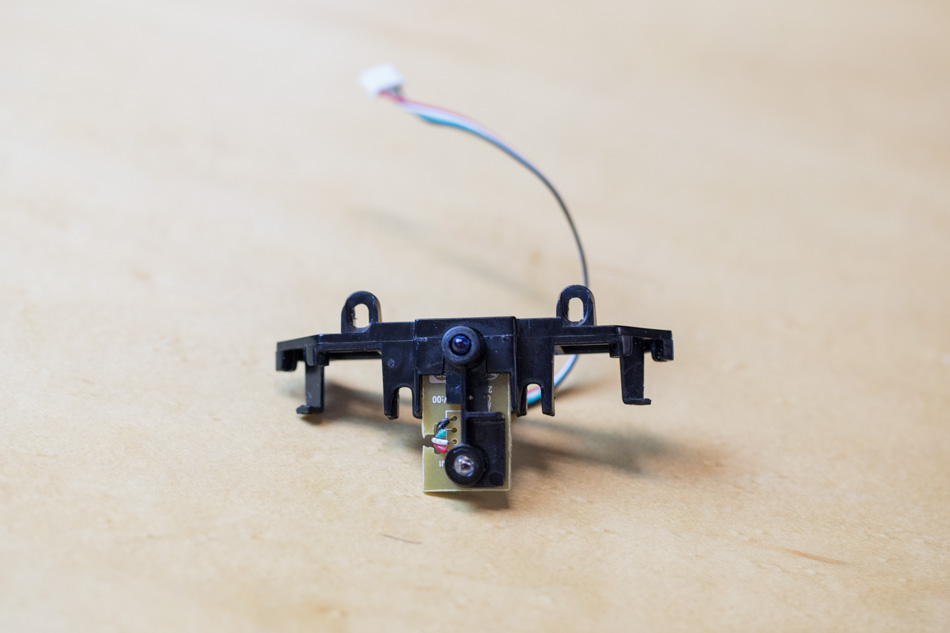
The white head shell has been partially sprayed black on the inside to prevent light “crosstalk”.
Also, you see that copper tape? Yeah, that’s part of CHiP’s “capacitive” touch sensor array. Fancy.
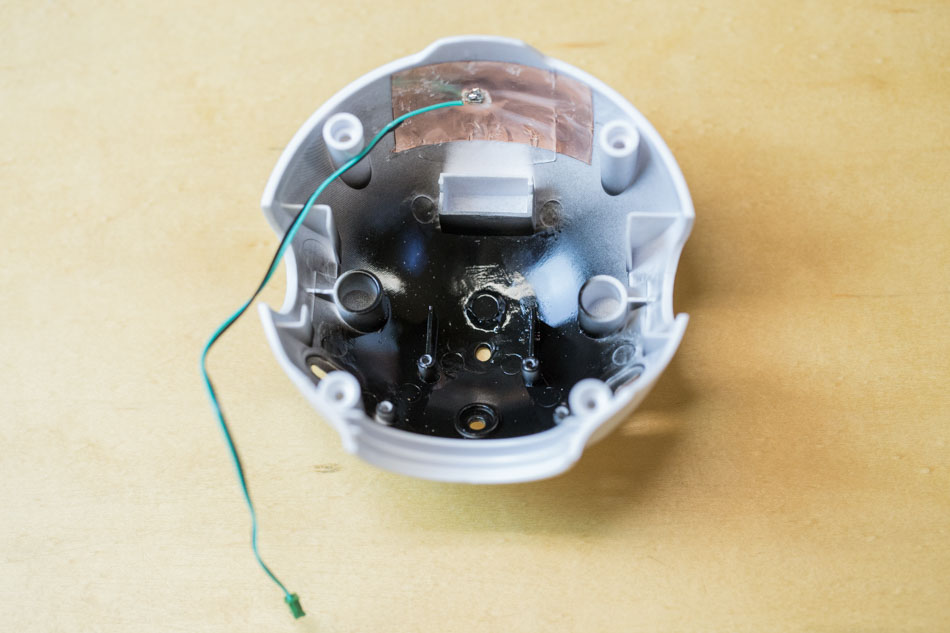
We find CHiP’s second large PCBA inside his head. Again, well color-coded for easy assembly. This PCBA serves as a hub for all the sensors.
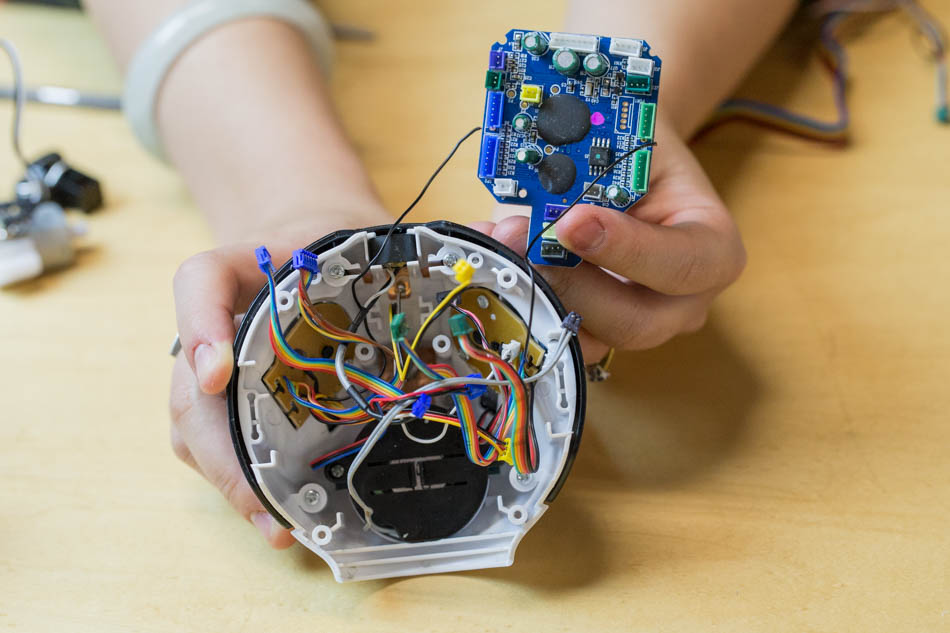
Each eye PCBA has of an array of three RGB LEDs and one IR sensor pair. There are also IR sensors in CHiP’s cheeks.
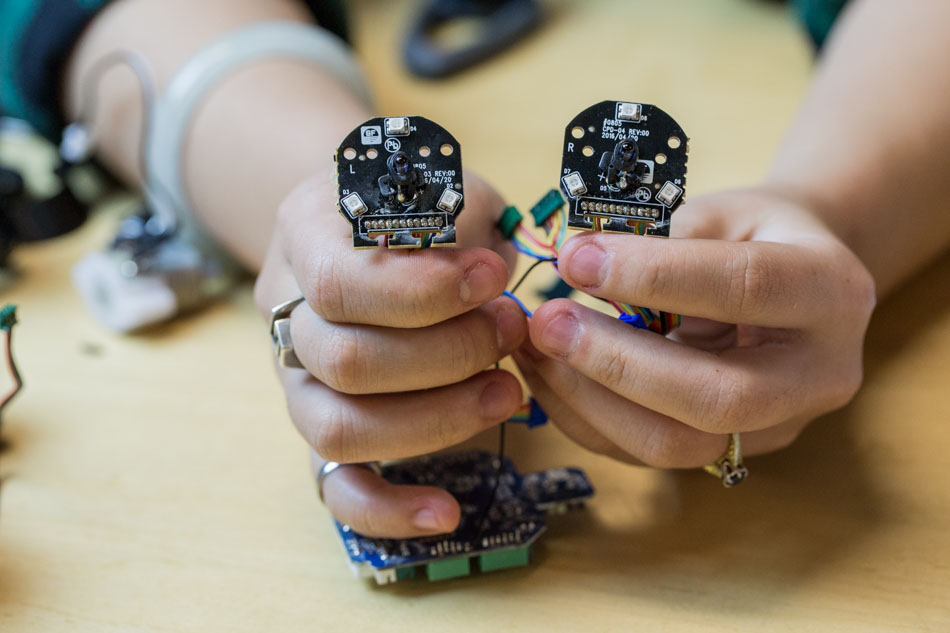
The grey eye covers are spray painted white on the inside for light diffusion. That’s about as low-tech as it gets.
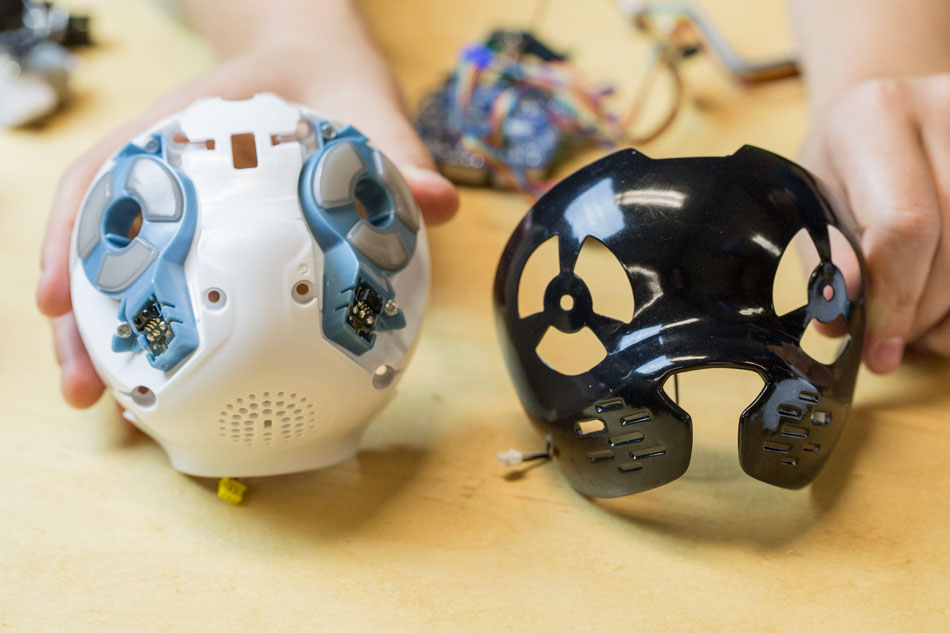
Flip these parts over, and there’s a simple, low-profile speaker and two more copper tape capacitive touch sensing areas.
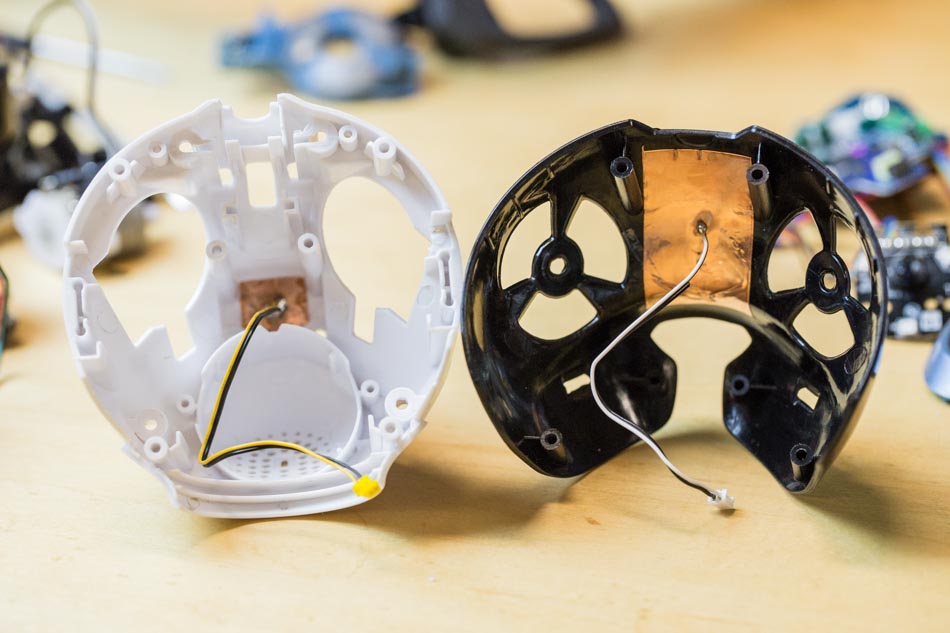
Main Takeaways
CHiP has a lot of unique plastic parts, which would have incurred high tooling costs; however, the finish is not super polished, which helps to keep costs down. This is a toy for children, after all—it’ll get beaten up in no time.
CHiP’s sensors are cheap and easy to source. IR powers all of CHiP’s “situational awareness.” IR LED pairs help CHiP communicate with his ball and his remote control, and they help him find his charging dock. They’re also used for navigation and obstacle avoidance. The capacitive sensors are just copper tape. It’s simple, but it works!
WowWee engineers weren’t crunched for space when designing CHiP: He had to be a reasonable size for a pet, so electronics didn’t have to be miniaturized. Large connectors were used everywhere, and self-threading screws held everything together. Although CHiP has a lot of components, his creators tried to make the assembly process as straightforward as possible by color coding.
The coolest part of CHiP is definitely his mecanum wheels, which will definitely make it into our next robotics project (Robotshop sells a variety of sizes). After publishing this teardown, we’re going right back into watching mecanum videos on YouTube.
Thank you, CHiP, for your contribution to manufacturing and engineering education. We will never forget you!
